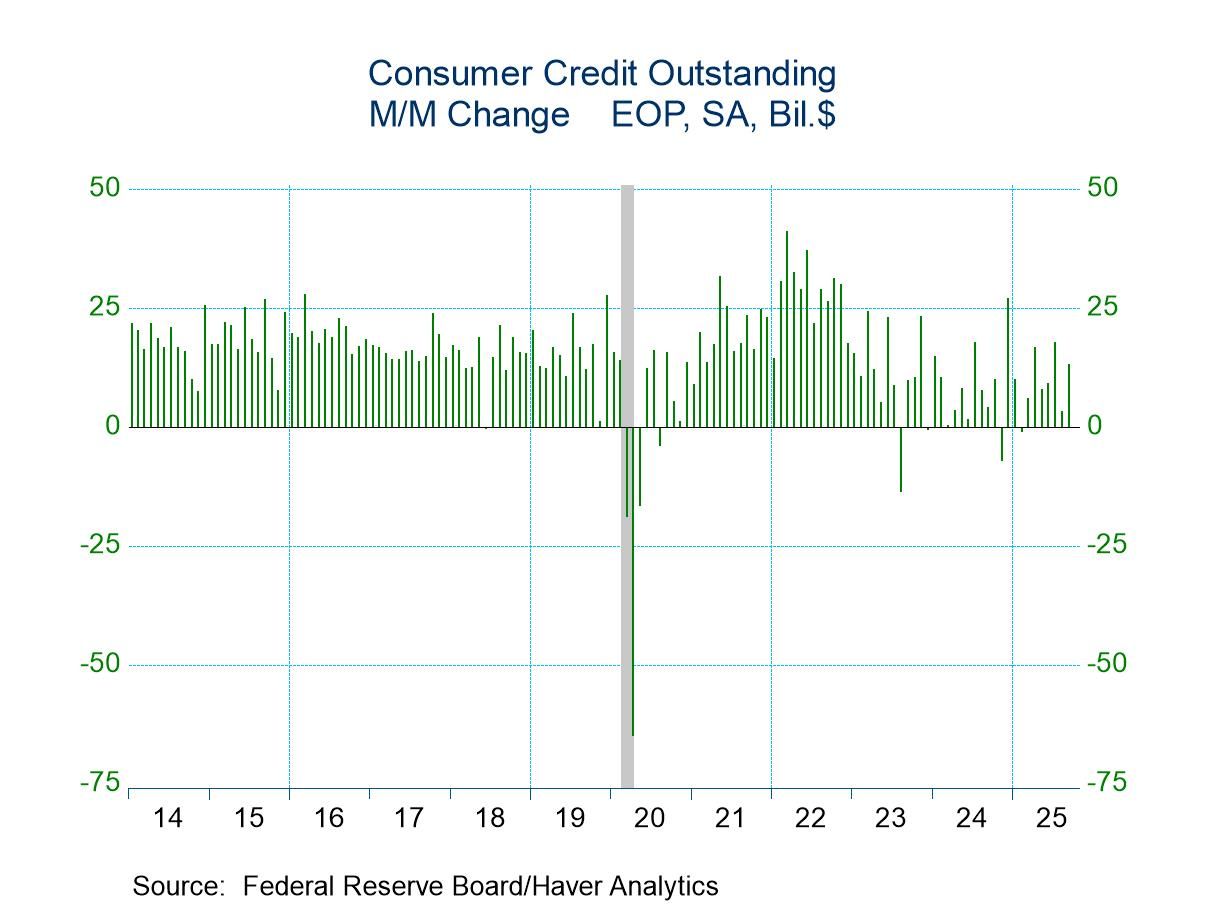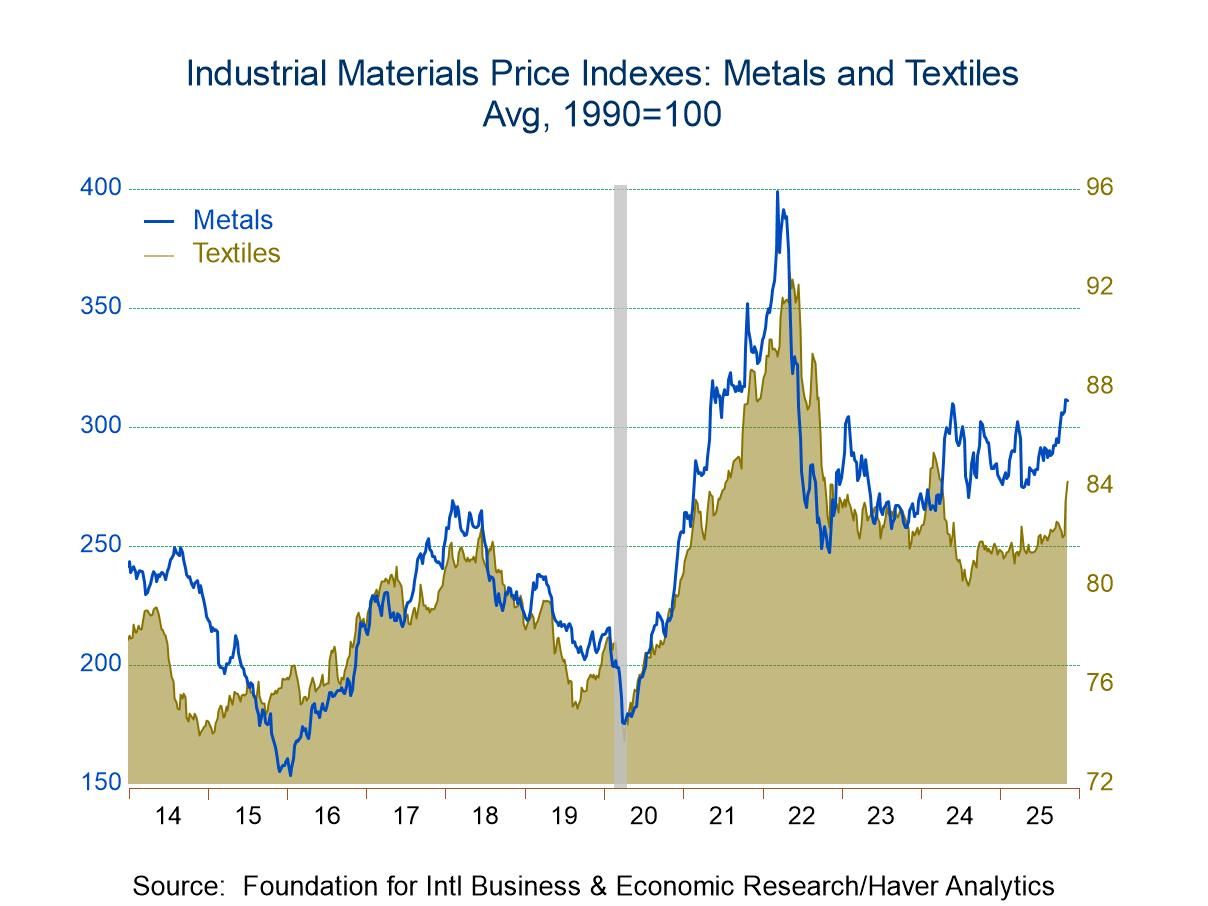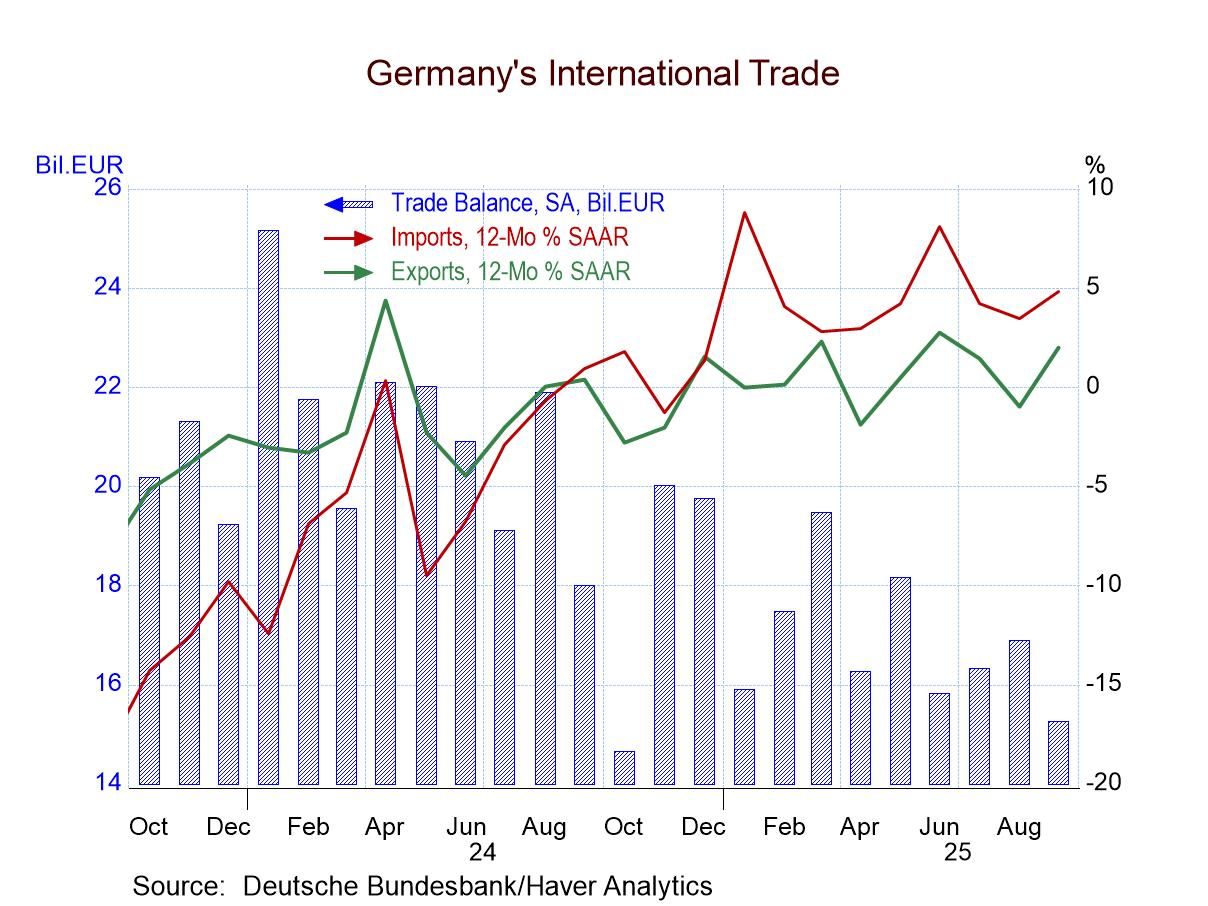 Global| Nov 16 2005
Global| Nov 16 2005Foreign Investors Increase Net Securities Purchases in US Markets Again in September
Summary
Foreign investors continued to increase their participation in US securities markets in September, according to the US Treasury's monthly Treasury International Capital ("TIC") data reported this morning. For the first time, net [...]
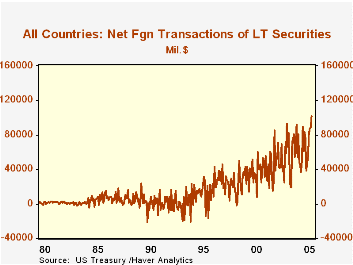
Foreign investors continued to increase their participation in US securities markets in September, according to the US Treasury's monthly Treasury International Capital ("TIC") data reported this morning. For the first time, net purchases of major marketable securities surpassed $100 billion, reaching $101.9 billion. As evident in the table below, just two years ago, monthly average purchases were only about half this amount.
The TIC data, carried in Haver's USINT database, constitute a sizable body of information about interest in US markets from investors in many countries around the world. Many observers look to these data as a way of gauging the ease with which foreign capital flows "finance" the now enormous US current account deficit. Indeed, as we have pointed out here before, there is a high correlation of these investment flows with the size of that deficit.
However, one aspect that strikes us this month is the variety contained in the transactions. While the volume in US Treasuries look fairly steady in our table, in individual months they have ranged from a net liquidation of $3.2 billion (February 2003) to net purchases in excess of $50 billion (each March and April 2004). Other securities categories show even more variability. Perhaps the only repeated pattern is a consistent liquidation of foreign stocks that trade in US markets.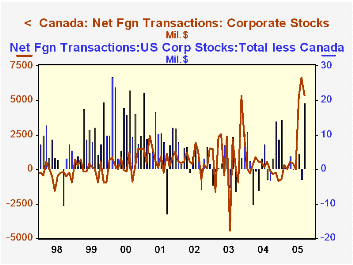
There is also great variability among the nations represented. A quick glance at a list of the countries and their purchases of various instruments shows much up and down movement in most any combination. Such wide-ranging changes highlight the fact that these transactions are generated by thousands of individual investment decisions. For example, total net purchases of US corporate stocks surged from $3.8 billion in August to $24.6 billion in September. Canadian investors bought about the same amount in each of these months: $6.6 billion in August and $5.4 billion in September. So other investors were obviously net sellers in the former month, but switched to making sizable purchases in the latter. Canadians, in the meantime, had bought $1.7 billion on net of US corporate bonds in August, but reduced their activity in these bonds to nearly zero in September. Thus, multiple investment motivations must be at work among these diverse financial market participants. Further, we'd hazard a guess that any "financing" of the current account is more likely to be reflected in short-term financial instruments, such as flows of bank deposits, commercial paper and trade credit. Some of these data are also contained in the USINT database as "banking liabilities to foreigners" and "nonbanking liabilities to foreigners. Those liabilities, some of which are published only quarterly and available only through Q2, have grown rapidly over the past year, as one might expect, but more examination of these relationships is needed to form firmer conclusions on the origins of these flows.
| Net Foreign Purchases of Securities in US Markets (Billions US$) |
Sept 2005 | Aug 2005 | July 2005 | Last 12 Months' Average | Monthly Average|||
|---|---|---|---|---|---|---|---|
| 2004 | 2003 | 2002 | |||||
| Total | 101.9 | 89.0 | 87.3 | 71.5 | 63.6 | 55.3 | 47.9 |
| Treasuries | 21.8 | 28.2 | 28.5 | 25.7 | 29.3 | 22.0 | 10.0 |
| Federal Agencies (mostly "GSEs") | 20.6 | 15.7 | 37.8 | 20.8 | 18.9 | 13.0 | 16.3 |
| US Corporate Bonds | 51.1 | 40.2 | 24.7 | 30.3 | 25.8 | 22.1 | 15.2 |
| US Corporate Stocks | 24.6 | 3.8 | 10.0 | 7.4 | 2.4 | 2.9 | 4.2 |
| Foreign Bonds | -9.1 | 17.1 | -5.1 | -2.9 | -5.7 | 2.7 | 2.4 |
| Foreign Stocks | -7.0 | -13.5 | -8.7 | -9.8 | -7.1 | -7.4 | -0.1 |
Carol Stone, CBE
AuthorMore in Author Profile »Carol Stone, CBE came to Haver Analytics in 2003 following more than 35 years as a financial market economist at major Wall Street financial institutions, most especially Merrill Lynch and Nomura Securities. She had broad experience in analysis and forecasting of flow-of-funds accounts, the federal budget and Federal Reserve operations. At Nomura Securities, among other duties, she developed various indicator forecasting tools and edited a daily global publication produced in London and New York for readers in Tokyo. At Haver Analytics, Carol was a member of the Research Department, aiding database managers with research and documentation efforts, as well as posting commentary on select economic reports. In addition, she conducted Ways-of-the-World, a blog on economic issues for an Episcopal-Church-affiliated website, The Geranium Farm. During her career, Carol served as an officer of the Money Marketeers and the Downtown Economists Club. She had a PhD from NYU's Stern School of Business. She lived in Brooklyn, New York, and had a weekend home on Long Island.


